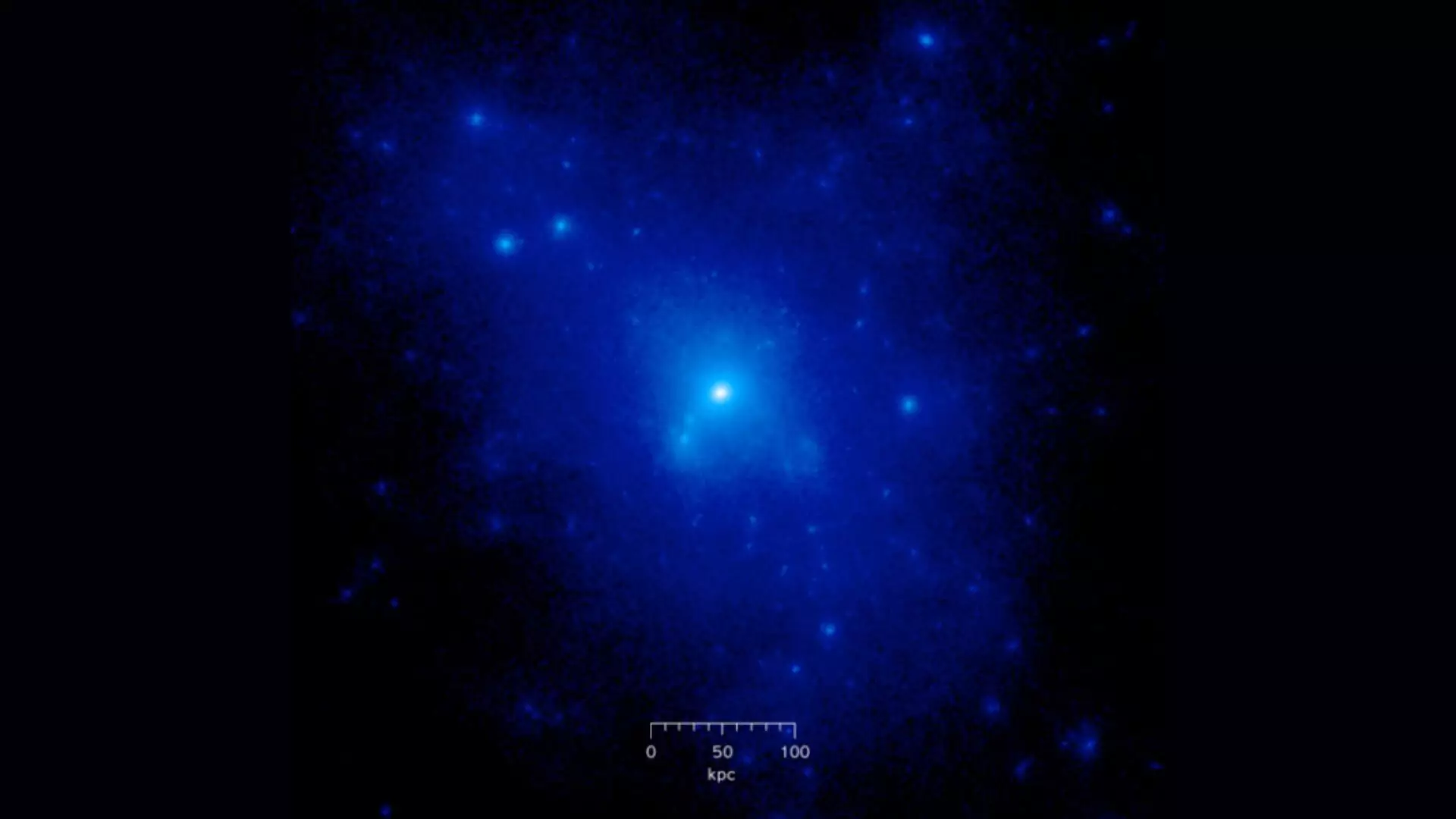Recent research highlighted in the journal Physical Review Letters has unveiled the first successful detection of the interplay between cosmic shear and the diffuse X-ray background, offering valuable insights into the distribution of baryonic matter—the ordinary matter that forms everything we recognize, including stars, planets, and galaxies. Baryonic matter, which constitutes approximately 5% of the universe, interacts intricately with dark matter, a mysterious substance that is more abundant and forms the gravitational scaffolding necessary for structuring galaxies. This relationship is crucial for understanding how the universe’s architecture is formed and sustained.
Baryonic matter can be found in two predominant forms: concentrated (as stars and galaxies) and diffuse (as hot gas enveloping dark matter structures). However, detecting this diffuse gas is challenging due to the complex gravitational interactions it undergoes within dark matter halos. This difficulty prompted Dr. Tassia Ferreira and her team at the University of Oxford to investigate how baryonic physics influences cosmological measurements, paving the way for a deeper understanding of the universe’s underlying composition.
Dr. Ferreira’s research relied heavily on the combination of two distinct observational data sources to better characterize baryonic matter. On one hand, cosmic shear measurements derived from The Dark Energy Survey Year 3 (DES Y3) provided vital information regarding the distribution of dark matter. This data captures images of galaxies—specifically their deformations, a phenomenon caused by the gravitational effects of dark matter on the background cosmic structures. By examining these cosmic shear effects, researchers can infer the distribution and density of dark matter halos.
On the other hand, the study utilized data from The ROSAT All-Sky Survey (RASS), which captured an extensive X-ray view of the universe from 1990 to 1991. The X-ray emissions from hot gas within dark matter halos arise due to gravitational heating, making these emissions an invaluable tool for tracing baryonic matter distribution. The merging of these datasets allows researchers to derive a more comprehensive picture of how baryonic matter is allocated within cosmic structures.
The Significance of Cross-Correlations
The groundbreaking methodology employed by Ferreira and her colleagues focuses on establishing a cross-correlation between cosmic shear measurements and diffuse X-ray emissions. This approach enables a more nuanced analysis of baryonic matter, countering the potential biases that could arise when studying the two phenomena in isolation. Dr. Ferreira emphasized the significance of their findings by noting that the X-ray emissions depend heavily on gas temperature and density, which are critical in tracing how baryonic matter is distributed in and around dark matter halos.
The results of their cross-correlation study revealed a strong statistical correlation between cosmic shear and diffuse X-ray emissions, quantifying a notable significance of 23σ (sigma)—an impressive result indicating a robust relationship between the datasets. This correlation has significant implications for understanding how baryonic matter is affected by dark matter halos and the dynamical processes governing mass distribution in the universe.
One of the central contributions of this research is the estimation of the halfway mass of dark matter halos, calculated to be around 115 trillion solar masses. The halfway mass signifies the point at which half of the gas in a halo has been expelled, an important metric for understanding the processes that cause gas loss, such as star formation and black hole activity. By quantifying this lost gas, researchers can better comprehend how cosmic structures are impacted by these transformative processes over time.
Additionally, the researchers were able to constrain the polytropic index—the relationship between gas temperature and density—providing deeper insights into the conditions prevalent within these dark matter halos. This new data not only corroborates previous studies but also enriches our understanding of the dynamics governing gas behavior in cosmic environments.
Looking ahead, Dr. Ferreira expresses enthusiasm for the potential applications of their work, particularly in refining theoretical frameworks concerning dark matter and dark energy. Their methodology presents a promising starting point for future investigations, particularly with upcoming projects like the Vera Rubin Observatory and Euclid, which will focus on weak lensing surveys in combination with contemporary X-ray missions like eROSITA.
The ongoing research endeavors aim to refine cosmological constraints derived from large-scale structures, enriching our understanding of the universe’s intricacies. For Dr. Ferreira and her team, the implications of their findings extend beyond mere academic curiosity; they represent a step toward comprehensively unraveling the complexity of the cosmos and its underlying mechanics, opening new avenues for exploration in the field of astrophysics.


Leave a Reply